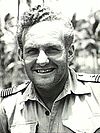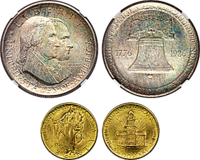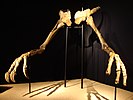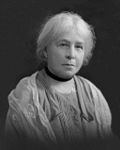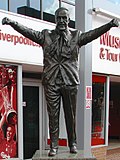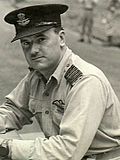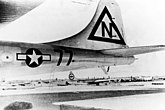Wikipedia:Today's featured article/July 2016
| << | Today's featured articles for July 2016 | >> | ||||
|---|---|---|---|---|---|---|
| Su | Mo | Tu | We | Th | Fr | Sa |
| 1 | 2 | |||||
| 3 | 4 | 5 | 6 | 7 | 8 | 9 |
| 10 | 11 | 12 | 13 | 14 | 15 | 16 |
| 17 | 18 | 19 | 20 | 21 | 22 | 23 |
| 24 | 25 | 26 | 27 | 28 | 29 | 30 |
| 31 | ||||||
July 1
The Man in the Moone is a book by the English Church of England bishop Francis Godwin (1562–1633). Initially considered to be one of his early works, it is now thought to date from the late 1620s. It was first published posthumously in 1638 under the pseudonym of Domingo Gonsales. The work made a contribution to the branch of astronomy influenced by Nicolaus Copernicus, the only astronomer mentioned by name. Gonsales is a Spaniard forced to flee the country after killing a man in a duel. Having made his fortune in the East Indies he decides to return to Spain, but falls ill on the voyage home and is set off on St Helena to recover. He resumes his journey, but his ship is attacked by a British fleet off the coast of Tenerife. He uses a flying machine he has devised to escape, but once safely landed he is approached by hostile natives and is forced to take off again. This time the birds powering his machine fly higher and higher, ultimately reaching the Moon. There Gonsales encounters the Lunars, a tall Christian people inhabiting what appears to be a utopian paradise. Some critics consider The Man in the Moone to be one of the first works of science fiction. (Full article...)
July 2
The barn owl (Tyto alba) is the most widely distributed species of owl, and one of the most widespread of all birds. It is found in most parts of the world, with one major lineage in the New World, one in Australasia, and another in Eurasia and Africa. The 28 subspecies, between 33 and 39 cm (13 and 15 in) in length, have wingspans ranging from 80 to 95 cm (31 to 37 in). Their colours vary, but most have mottled grey or brown plumage and paler underparts, with a white, heart-shaped face. The barn owl relies on acute hearing to detect small mammals and other prey, hunting almost exclusively at night. It does not hoot, but utters an eerie, drawn-out shriek. It mates for life unless one of a pair dies, when a new pair bond may be formed. The nest is in a hollow tree, old building or cliff; the female does all the incubation, and she and the young chicks rely on the male for food. When large numbers of small prey are available, barn owl populations can expand rapidly. Globally, the species is not threatened, except for some subspecies with restricted ranges. (Full article...)
July 3
John Balmer (3 July 1910 – 11 May 1944) was a bomber pilot in the Royal Australian Air Force (RAAF). He joined the RAAF in 1932, and gained attention as a cross-country motorist before the war. In 1940 he became the inaugural commanding officer of No. 13 Squadron, operating Lockheed Hudsons in Northern Australia. He was raised to temporary wing commander in 1941, and within a year had taken charge of the RAAF's first Bristol Beaufort unit, No. 100 Squadron. Appointed an Officer of the Order of the British Empire in 1942, he led the Beauforts on bombing and torpedo missions against Japanese targets during the New Guinea campaign. Posted to England in 1943, Balmer took command of No. 467 Squadron RAAF, flying Avro Lancasters in the air war over Europe. He led his unit through the Battle of Berlin from November 1943 to March 1944. In April he was awarded the Distinguished Flying Cross, and the following month promoted to temporary group captain. Days later, on the night of 11 May, Balmer's last scheduled operation as the squadron's commanding officer, he and his crew were killed when their plane was shot down. He was buried outside Brussels. (Full article...)
July 4
The United States Sesquicentennial coins, a commemorative half dollar and quarter eagle (gold $2.50 piece) for the 150th anniversary of American independence, were struck in 1926 at the Philadelphia Mint. The half dollar depicts George Washington and then-president Calvin Coolidge, making Coolidge the only president to appear on a U.S. coin while living. The National Sesquicentennial Exhibition Commission was chartered by Congress in 1925, and was allowed to purchase and resell for profit 1,000,000 specially designed half dollars and 200,000 quarter eagles. The Commission had trouble agreeing on designs with Mint Chief Engraver John R. Sinnock, and asked artist John Frederick Lewis to submit sketches. These were adapted by Sinnock for the half dollar, without giving credit to Lewis, whose involvement would not be generally known for forty years. The maximum number of each coin was struck, with many melted when they failed to sell at a premium. The Liberty Bell reverse for the half dollar was reused by Sinnock, again without giving Lewis credit, on his Franklin half dollar, first minted in 1948. (Full article...)
July 5
Nights into Dreams... is an action video game developed by Sonic Team and published by Sega for the Sega Saturn in 1996. The story follows two teenagers, Claris and Elliot, who enter a dream world called Nightopia where all dreams take place. With the help of Nights, they begin a journey to stop the evil ruler Wizeman from destroying Nightopia and consequently the real world. Nights flies through Claris and Elliot's dreams, gathering energy to defeat Wizeman and save Nightopia. Development began soon after the release of Sonic & Knuckles in 1994, and was led by Sonic Team veterans Yuji Naka, Naoto Ohshima, and Takashi Iizuka. Naka began the project with flight as a main theme, and Ohshima designed the character Nights to resemble an angel that could fly like a bird. An analogue controller, known as the Saturn 3D controller, was designed alongside the game. Nights into Dreams... received positive reviews upon release; critics praised the graphics, gameplay, soundtrack, and atmosphere. It has been included on multiple lists as the best Sega Saturn game of all time, as well as one of the best video games ever made. (Full article...)
July 6
The history of the New York Yankees Major League Baseball team spans more than a century. Frank J. Farrell and William Stephen Devery bought the rights to an American League (AL) club in New York City after the 1902 season. The team, which became the Yankees in 1913, won their first AL title in 1921, followed by their first World Series championship in 1923. Babe Ruth and Lou Gehrig were part of the team's Murderers' Row lineup; under Miller Huggins, they led the Yankees to a Series championship and a 110-win season, a league record in 1927. The Yankees won the World Series every year from 1936 to 1939 with a team that featured Gehrig and Joe DiMaggio. New York set a major league record by winning five consecutive championships from 1949 to 1953, and appeared in the World Series nine times during the next 11 years. Despite management disputes, the team reached the World Series four times between 1976 and 1981, claiming the championship in 1977 and 1978. Their 1998–2000 teams were the last to win three straight World Series titles. In 2009, they won the title for a record 27th time. (Full article...)
July 7
Aaliyah, released on July 7, 2001, by Blackground Records and Virgin Records America, is the third and final studio album by American R&B recording artist Aaliyah (pictured). Recorded from 1998 to 2000, it is an R&B and neo soul record, drawing on funk, hip hop, alternative rock, and electronica sounds, among others. Most of the song lyrics were written by Static Major, and deal with the complexities of romantic love and the stages of a relationship; Aaliyah viewed the album as a reflection of herself as both a young adult and a matured vocalist. Aaliyah received positive critical reviews, and debuted at number two on the Billboard 200, though sales began to drop off shortly after its release. Following Aaliyah's death in a plane crash on August 25, 2001, seven weeks after the album's release, sales skyrocketed, and the album reentered the Billboard 200 at number one. Aaliyah was released during a period of peak activity in contemporary R&B; since its initial reception, it has been cited by critics as one of the best R&B records of its time. (Full article...)
July 8
The Jeannette Expedition of 1879–81 was an attempt led by George W. De Long to reach the North Pole using a route through the Bering Strait to the fabled temperate Open Polar Sea. The expedition was financed by James Gordon Bennett Jr., the proprietor of the New York Herald, and based on the ocean current theories of the German cartographer August Petermann. The attempt failed; the expedition's ship, USS Jeannette (pictured), drifted in the polar ice for nearly two years before being crushed and sunk, north of the Siberian coast. De Long then led his men on a journey by boat and sled to the Lena Delta. Before ultimate rescue, more than half of the ship's complement died, including De Long. During Jeannette's long drift the expedition discovered what were later called the De Long Islands, and collected significant meteorological and oceanographic data. Although the ship's fate demolished the long-standing Open Polar Sea theory, the appearance in 1884 of debris from the wreck on the south-west coast of Greenland indicated that an Arctic current carried the ice from east to west. This discovery inspired Fridtjof Nansen to mount his Fram expedition nine years later. (Full article...)
July 9
The genus Deinocheirus (Greek for "horrible hand") was a dinosaur that lived during the Late Cretaceous around 70 million years ago. In 1965 its shoulder girdles and a pair of large arms (pictured) were first discovered in the Nemegt Formation of Mongolia, and in 2014 two complete specimens were described. Deinocheirus was the largest ornithomimosaur (ostrich dinosaur), at 11 m (36 ft) long, and weighed 6.36 t (14,000 lb), although it had many hollow bones. The arms were among the largest of any bipedal dinosaurs at 2.4 m (7.9 ft) long, with large, blunt claws on its three-fingered hands. The legs were relatively short, and bore blunt claws. Its vertebrae had tall spines that formed a sail along its back. The skull was 1.024 m (3.36 ft) long, with a wide bill and a deep lower jaw. Deinocheirus is thought to have been omnivorous; its skull shape indicates a diet of plants, and fish scales were found with one specimen. It probably used gastroliths to grind food. The large claws may have been used for digging and gathering plants. Bite marks on Deinocheirus bones have been attributed to the tyrannosaurid Tarbosaurus. (Full article...)
July 10
No. 90 (Composite) Wing was a Royal Australian Air Force (RAAF) wing that operated during the early years of the Malayan Emergency. Its purpose was to serve as an overarching organisation for the RAAF units deployed in the conflict, No. 1 (Bomber) Squadron, flying Avro Lincolns, and No. 38 (Transport) Squadron, flying Douglas C-47 Dakotas. The wing was established on 10 July 1950 and headquartered at Changi, on the east coast of Singapore. No. 1 Squadron operated from Tengah, in Singapore's west. No. 38 Squadron was based at Changi and, from April 1951 to February 1952, at Kuala Lumpur in central Malaya. The Lincolns generally conducted area bombing missions, as well as precision strikes, to harass communist insurgents. The Dakotas were tasked with airlifting cargo, VIPs, troops and casualties, as well as courier flights and supply drops. Following No. 38 Squadron's departure in December 1952, No. 90 Wing was disbanded, leaving No. 1 Squadron to carry on as the sole RAAF unit in the campaign until its withdrawal to Australia in July 1958. (Full article...)
Part of the No. 90 (Composite) Wing RAAF featured topic.
July 11
Satoru Iwata (December 6, 1959 – July 11, 2015) was a Japanese game programmer and businessman who became the fourth president and chief executive officer of Nintendo in 2002. Born in Sapporo, Japan, Iwata expressed interest in video games from an early age and later majored in computer science at the Tokyo Institute of Technology. He joined the game developer HAL Laboratory in 1980 and became its president in 1993. Joining Nintendo as the head of its corporate-planning division in 2000, he brought growth to the company. A self-declared gamer, he focused on expanding the appeal of video games across all demographics and increasing the market space. He also built a strong relationship with Nintendo fans through social media and his regular appearances in Iwata Asks and Nintendo Direct, becoming the public face of the company. Under his direction, Nintendo developed the profitable Nintendo DS and Wii video game consoles, but the Nintendo 3DS and Wii U dropped net sales by two-thirds from 2009 to 2012, leaving the company with its first operating losses in 30 years. Iwata voluntarily halved his salary as an apology in 2011 and 2014. (Full article...)
July 12
Katsudō Shashin is a filmstrip speculated to be the oldest work of animation in Japan. Three seconds long, it depicts a boy who writes "moving picture" in Japanese script, removes his hat, and waves. Discovered in a collection of films and projectors in Kyoto, its creator is unknown. Natsuki Matsumoto, an expert in iconography at the Osaka University of Arts, determined that it was most likely made before 1912. It may have been influenced by animated filmstrips for German cinematographs, devices that first appeared in Japan in 1904. Evidence suggests Katsudō Shashin was mass-produced to be sold to wealthy owners of home projectors. To Matsumoto, the relatively poor quality and low-tech printing technique indicate it was likely from a smaller film company. Unlike in traditional animation, the frames were not produced by photographing the images, but were impressed directly onto film. They were stencilled in red and black using a device for making magic lantern slides, and the filmstrip was fastened in a loop for continuous play. (Full article...)
July 13
Margaret Murray (13 July 1863 – 13 November 1963) was an Anglo-Indian Egyptologist, archaeologist, historian, and folklorist. The first female archaeology lecturer in the United Kingdom, she worked at University College London (UCL) and served as President of the Folklore Society. Born in Calcutta, Murray moved to London and began studying Egyptology at UCL. The department head Flinders Petrie encouraged her research and soon appointed her Junior Professor. She established a reputation in Egyptology for her excavations of the Osireion temple and Saqqara cemetery. She taught at the British Museum and also the Manchester Museum, where she led the unwrapping of one of the mummies from the Tomb of the Two Brothers. A first-wave feminist, Murray joined the Women's Social and Political Union. During the First World War, she began promoting the hypothesis that the witch trials of Early Modern Christendom were an attempt to extinguish a surviving pre-Christian religion devoted to a Horned God. Although later academically discredited, the theory gained widespread attention and provided the basis for Wicca. (Full article...)
July 14
The 2002 Atlantic hurricane season produced 14 tropical cyclones, including 12 named storms, 4 hurricanes, and 2 major hurricanes. A record-tying eight storms developed in September. No tropical storms formed after October 6—a rare occurrence, caused partly by El Niño conditions. The most intense hurricane of the season was Isidore, with a minimum central pressure of 934 mbar, although Hurricane Lili attained higher winds and peaked at Category 4 on the Saffir–Simpson Scale. The season was less destructive than average, causing an estimated US$2.6 billion in property damage and 23 fatalities. In September, Hurricane Gustav moved ashore on Nova Scotia as it was transitioning into an extratropical cyclone, lashing the region with high winds for several days. Isidore struck the Yucatan Peninsula and later the United States, causing about $970 million in damage and killing a total of seven. Several other storms directly affected land during August and September, including the longest lived of the season, Hurricane Kyle. In early October, Lili made landfall in Louisiana, where it caused $860 million in damage and 15 deaths. (Full article...)
Part of the 2002 Atlantic hurricane season featured topic.
July 15
Learie Constantine (1901–1971) was a West Indian cricketer, lawyer and politician who played 18 Test matches before the Second World War. Although his Test record was modest, he helped to establish a uniquely West Indian style of aggressive play. He served as Trinidad's High Commissioner to the United Kingdom and in 1969 became the UK's first black peer. His early experiences of race discrimination affected him profoundly, and in later life he was influential in the passing of the 1965 Race Relations Act in Britain. Born in Trinidad, Constantine toured England with the West Indies cricket teams in 1923 and 1928 before signing as a professional with the Lancashire League club Nelson. He played for the club between 1929 and 1938, while continuing to appear in Test cricket for the West Indies; he lived mainly in England for the rest of his life. After qualifying as a barrister in 1954, Constantine returned to Trinidad, entered politics and served in the Trinidad government as minister of communications. In 1961 he was appointed Trinidad's High Commissioner in the UK, serving until 1964 and remaining in London thereafter. In his final years, he served on the Race Relations Board, the Sports Council and the Board of Governors of the BBC. (Full article...)
July 16
The Requiem by Max Reger is a late Romantic setting of Friedrich Hebbel's poem "Requiem" for alto or baritone solo, chorus and orchestra. The text begins with a plea not to forget the dead. Composed in 1915, Reger dedicated it "to the memory of the German heroes" who died in the World War. He had composed Requiem settings before: in 1912 a motet for male chorus, set to the same poem, and in 1914 an unfinished setting of the Latin Requiem, in memory of victims of the war. The 1915 Requiem, Reger's last completed work for chorus and orchestra, was published by N. Simrock in 1916, after the composer's death. It was paired with another choral composition, Der Einsiedler (The Hermit), set to a poem by Joseph von Eichendorff, titled Zwei Gesänge für gemischten Chor mit Orchester (Two songs for mixed chorus with orchestra), Op. 144. Both works were first performed in Heidelberg on 16 July 1916 as part of a memorial concert for Reger, conducted by Philipp Wolfrum. Reger thought that The Hermit and the Requiem were "among the most beautiful things" he had ever written. (Full article...)
July 17
Operation Mascot was an unsuccessful British air raid on the German battleship Tirpitz which took place during the early hours of 17 July 1944. One of a series of aircraft carrier strikes between April and August 1944 against the battleship at anchor in Kaafjord, Norway, the raid was conducted by 44 British dive bombers and 40 fighters from three carriers. They were detected en route by German radar stations, and Tirpitz was protected by a smoke screen by the time they arrived. Few of the British airmen were able to spot the battleship, and their attacks did not inflict any significant damage. German losses were limited to a patrol craft; three British aircraft were destroyed or damaged beyond repair by Kaafjord's defenders. Two U-boats from a group attempting to intercept the carrier force were sunk by British patrol aircraft, and several others were damaged. Despite the failure of Operation Mascot, the Royal Navy attempted four further carrier raids against Tirpitz during August 1944. These attacks were also unsuccessful, and the task of sinking the battleship was transferred to the Royal Air Force. (Full article...)
July 18
State Route 56 (SR 56) is an east–west state highway in the U.S. state of California. It runs 9.2 miles (14.8 km) from Interstate 5 (I-5) in the Carmel Valley neighborhood of San Diego to I-15. It is named after Ted Williams, a baseball player born in San Diego. The eastern terminus of the highway meets the western end of the Ted Williams Parkway. SR 56 serves as an important connector between I-5 and I-15, being the only east–west freeway between SR 78 in north San Diego County, several miles away, and SR 52 near Marine Corps Air Station Miramar. SR 56 was added to the state highway system in 1959 as Legislative Route 278, and was renumbered SR 56 in the 1964 state highway renumbering. A plan in 1964 to connect SR 56 to the north end of SR 125 and continue east to SR 67 did not come to fruition. The eastern end from Black Mountain Road to I-15 was opened in 1993; the western end from I-5 to Carmel Creek Road was delayed until 1995 by several lawsuits. The two ends were not connected until the freeway was completed in 2004; the delay was largely due to funding issues and environmental concerns. (Full article...)
July 19
Pedro Afonso (1848–1850) was the Prince Imperial and heir apparent to the throne of the Empire of Brazil. Born at the Palace of São Cristóvão in Rio de Janeiro, he was the second son and youngest child of Emperor Pedro II and Teresa Cristina of the Two Sicilies, and thus a member of the Brazilian branch of the House of Braganza. His aunt was the reigning Queen of Portugal, Dona Maria II. Pedro Afonso was seen as vital to the future viability of the monarchy, which had been put in jeopardy by the death of his older brother Afonso almost three years earlier. Pedro Afonso's early death from fever at the age of one devastated the Emperor, and the imperial couple had no further children. Pedro Afonso's older sister Isabel became heiress, but Pedro II was unconvinced that a woman could ever be accepted as monarch by the ruling elite. He excluded Isabel from matters of state, and failed to provide training for her possible role as empress. With no surviving male children, the Emperor started to believe that the imperial line was destined to end with his own death. (Full article...)
July 20
Sesame Street's format includes skits featuring Jim Henson's Muppets as well as animation and short films to help its preschool audience prepare for school. The American children's television program uses music, humor, and sustained action to capture young viewers' attention. Premiering in 1969, it was the first television show to base its contents and production values on laboratory and scientific research, and the first to base its curriculum on what its researchers termed "measurable outcomes". It was also the first to use an authentic inner-city street and neighborhood setting for a children's program. The producers switched in 1998 from a magazine-based structure to a more narrative format after the show's ratings dominance was challenged by programs such as Barney and Friends and Blue's Clues. The popular fifteen-minute segment "Elmo's World", hosted by the Muppet Elmo, was added the same year to make the show more accessible to a younger audience. The new format was expanded to the entire show in 2002. (Full article...)
July 21
The history of Liverpool Football Club from 1959 to 1985 opens with the appointment of Bill Shankly as manager of Liverpool, then a Second Division club. Shankly overhauled the team and created the "Boot Room", a meeting place to discuss strategy. The club quickly won promotion to the First Division, and within four years won their first League championship since 1946–47 and their first FA Cup. They won further League championships in 1965–66 and 1972–73, the FA Cup in 1974, and their first European trophy, the UEFA Cup, in 1973. Shankly retired and his assistant Bob Paisley took over. Paisley won three European Cups, the UEFA Cup and six League championships in nine years before retiring at the end of 1982–83; he was replaced by his assistant, Joe Fagan. Liverpool won three trophies during Fagan's first season as manager: a fourth European Cup, the League championship and the Football League Cup. At the European Cup Final in 1985, Liverpool fans were responsible for crowd trouble at the Heysel Stadium. In the resulting panic, a wall collapsed; 39 fans, mostly Italian, died, and English clubs were banned from European competition for five years. (Full article...)
Part of the Liverpool F.C. featured topic.
July 22
Mischief Makers is a 1997 side-scrolling platform video game, the first for the Nintendo 64, developed by Treasure and published by Enix and Nintendo. The player assumes the role of Marina, a robotic maid who grabs, shakes and throws objects in her journey to rescue her creator from the emperor of Planet Clancer. The game is presented in 2.5D, with pre-rendered 3D backgrounds behind 2D gameplay. A 12-person team developed the game over two years as Treasure's first title for a Nintendo console. It was first shown at the 1997 Electronic Entertainment Expo and released later that year. The game's reviews were mixed: they praised its inventiveness, personality, and boss fights, but criticized its brevity, low difficulty, low replay value, sound, and harsh introductory learning curve. Retrospective reviewers disagreed with the originally poor reception, and several highlighted Marina's signature "Shake, shake!" sound bite. In 2009, GamesRadar called it "possibly the most underrated and widely ignored game on the N64". (Full article...)
July 23
Ian Dougald McLachlan (23 July 1911 – 14 July 1991) was a senior commander in the Royal Australian Air Force (RAAF). A Duntroon cadet before he joined the Air Force, McLachlan took command of No. 3 Squadron in December 1939, leading it into action in the Middle East less than a year later. He was posted to the South West Pacific in 1943, commanding successively Nos. 71 and 73 Wings. He took over Southern Area Command in 1944, and No. 81 Wing in the Dutch East Indies the following year. Raised to air commodore in 1946, McLachlan served with the British Commonwealth Air Group in Japan until 1948. After leading North-Eastern Area Command in 1951–53, he attended the Imperial Defence College, London. Promoted to air vice marshal, he returned to Australia in 1957 as Air Officer Commanding Training Command, carrying out major reviews on the RAAF's educational and command systems. He was Deputy Chief of the Air Staff in 1959–61, and then Head of the Australian Joint Services Staff in Washington, DC, until 1963. McLachlan's final post before retiring in 1968 was as Air Member for Supply and Equipment. He was a consultant to Northrop after leaving the RAAF. (Full article...)
July 24
The fungus Chalciporus piperatus, commonly known as the peppery bolete, is a small mushroom of the family Boletaceae found in mixed woodland in Europe and North America, and occasionally in Brazil. It has also become naturalised in Tasmania, under native myrtle beech trees. A small bolete, it has a 1.6–9 cm (0.6–3.5 in) orange-fawn cap with cinnamon or brown pores underneath, and a 4–9.5 cm (1.6–3.7 in) stalk. The rare variety hypochryseus, found only in Europe, has yellow pores and tubes. Described by Pierre Bulliard in 1790 as Boletus piperatus, it is only distantly related to other members of the genus Boletus and was reclassified as Chalciporus piperatus by Frédéric Bataille in 1908. Chalciporus was an early branching lineage in its family and appears to be related to boletes with parasitic properties. Previously thought to be symbiotic with tree roots, C. piperatus is now suspected of being parasitic on the mushroom Amanita muscaria. The flesh of C. piperatus has a very peppery taste, and can be used as a condiment or flavouring. (Full article...)
July 25

The 1880 Democratic National Convention met June 22–24, 1880, at the Music Hall (pictured) in Cincinnati, Ohio, nominating Winfield S. Hancock of Pennsylvania for President of the United States and William H. English of Indiana for vice president. Six men were officially candidates for nomination at the convention, and several more received votes. The two leading candidates were Hancock and Thomas F. Bayard, a conservative senator from Delaware. Many Democrats believed that Samuel J. Tilden of New York had been unjustly deprived of the presidency in 1876 and hoped to rally around him in the 1880 campaign, but his intentions were unclear. The first round of balloting was inconclusive. After learning of Tilden's withdrawal before the second round of balloting, the delegates flocked to Hancock, a career soldier and Civil War hero, who was nominated. English, a conservative from a swing state, was nominated for vice president. Hancock and English were narrowly defeated by Republicans James A. Garfield and Chester A. Arthur that autumn. (Full article...)
July 26
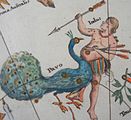
Pavo is a constellation in the southern sky with the Latin name for peacock. It is one of twelve constellations conceived by Petrus Plancius from the observations of Pieter Dirkszoon Keyser and Frederick de Houtman. First appearing on a 35 cm (14 in) diameter celestial globe published in 1598 in Amsterdam by Plancius and Jodocus Hondius, it was depicted in Johann Bayer's star atlas Uranometria of 1603. The constellation's brightest member, Alpha Pavonis, is also known as Peacock and appears as a 1.91-magnitude blue-white star, but is actually a spectroscopic binary. Delta Pavonis is a Sun-like star some 19.9 light years distant. Six of the star systems in Pavo have been found to host planets, including HD 181433 with a super-earth, and HD 172555 with evidence of a major interplanetary collision in the past few thousand years. The constellation contains NGC 6752, the third-brightest globular cluster in the sky, and the spiral galaxy NGC 6744, which closely resembles our Milky Way but is twice as large. (Full article...)
July 27
SS Washingtonian was a cargo ship launched in 1913 by the Maryland Steel Company, one of eight sister ships for the American-Hawaiian Steamship Company and the largest cargo ship under American registry at the time. During the American occupation of Veracruz in April 1914, the ship was chartered by the Department of the Navy for service as a refrigerated supply ship for the U.S. fleet stationed off the Mexican coast. In January 1915, after a little more than one year of service, Washingtonian collided with the schooner Elizabeth Palmer off the Delaware coast after the cargo ship's captain misjudged the schooner's rapid pace. Washingtonian sank in ten minutes with the loss of a $1,000,000 cargo of raw Hawaiian sugar. In the days after the sinking, the price of sugar in the United States increased almost 9%, partly attributed to the loss of this cargo. Lying under approximately 100 feet (30 m) of water, the wreck is one of the most popular recreational dive sites on the eastern seaboard. (Full article...)
July 28
Horace Greeley (1811–1872) was editor of the New-York Tribune, as well as the Democratic and Liberal Republican candidate in the 1872 U.S. presidential election. Born to a poor family in New Hampshire, Greeley in 1831 went to New York City to seek his fortune. He lived there the rest of his life, but also spent much time at his farm in Chappaqua. In 1841, he founded the Tribune, which became the highest-circulating newspaper in the country. He urged the settlement of the American West, popularizing the phrase "Go West, young man, and grow up with the country", though it is uncertain if he invented it. Greeley was briefly a Whig congressman from New York, and helped found the Republican Party in 1854. When the Civil War broke out, he mostly supported President Abraham Lincoln, and urged the end of slavery. Greeley ran in 1872 in an attempt to unseat President Ulysses Grant, whose administration he deemed corrupt, but lost in a landslide. Devastated at the defeat, he died three weeks after Election Day. (Full article...)
July 29
Silverplate was the codename for the United States Army Air Forces' participation in the Manhattan Project during World War II. Originally the name for the aircraft modification project for the B-29 Superfortress bomber to enable it to drop an atomic weapon, Silverplate eventually came to identify the training and operational aspects of the program as well. Modifications began in November 1943 on a prototype B-29 known as the "Pullman", used for bomb flight testing at Muroc Army Air Field in California commencing in March 1944. Seventeen production Silverplate aircraft were ordered in August 1944 for 509th Composite Group training, and to allow the 216th Army Air Forces Base Unit to test bomb configurations. In February 1945, 28 more were ordered, including Bockscar (pictured), the plane that carried out the atomic bombing of Nagasaki in August 1945. A total of 65 Silverplate B-29s were made. The use of the Silverplate codename was discontinued after the war; modifications to an additional 80 aircraft continued under a new codename, Saddletree. (Full article...)
July 30
In 1988, Orel Hershiser set the record in Major League Baseball for consecutive scoreless innings pitched. The Los Angeles Dodgers pitcher's streak of 59 innings spanned from the sixth inning of an August 30 game against the Montreal Expos to the tenth inning of a September 28 game against the San Diego Padres, not counting eight scoreless innings he pitched to start Game 1 of the 1988 National League Championship Series on October 4. The previous record of 58+2⁄3 innings was set by former Dodger pitcher Don Drysdale in 1968; as the team's radio announcer, Drysdale called Hershiser's streak as he pursued the new record. Following the regular season, Hershiser was awarded the National League Cy Young Award. In the playoffs, he earned both the National League Championship Series Most Valuable Player Award (MVP) and the World Series MVP Award. He also secured Sportsman of the Year and Associated Press Athlete of the Year honors. He continued to be an effective pitcher for many seasons, making two additional appearances in the World Series and winning the 1995 American League Championship Series MVP Award. (Full article...)
July 31
The smooth toadfish (Tetractenos glaber) is a species in the pufferfish family Tetraodontidae. It is native to shallow coastal and estuarine waters of southeastern Australia, where it is widespread and abundant. French naturalist Christophe-Paulin de La Poix de Fréminville described the species in 1813, though early records confused it with what is now the only other member of its genus, the common toadfish (T. hamiltonii). Up to 16 cm (6+1⁄4 in) long with distinctive leopard-like dark markings on its upperparts, the smooth toadfish has a flattened belly and an elongate body tapering to a slender tail. Its back and fins are rounded. Unlike most of its relatives, it does not have prominent spines on its body. Like other pufferfish, it can inflate itself with water or air. It forages for its preferred foods—molluscs and crustaceans—in sandy or muddy sediment. Often an unwanted catch by anglers, the smooth toadfish's flesh contains the poison tetrodotoxin, and eating it may result in death. (Full article...)



